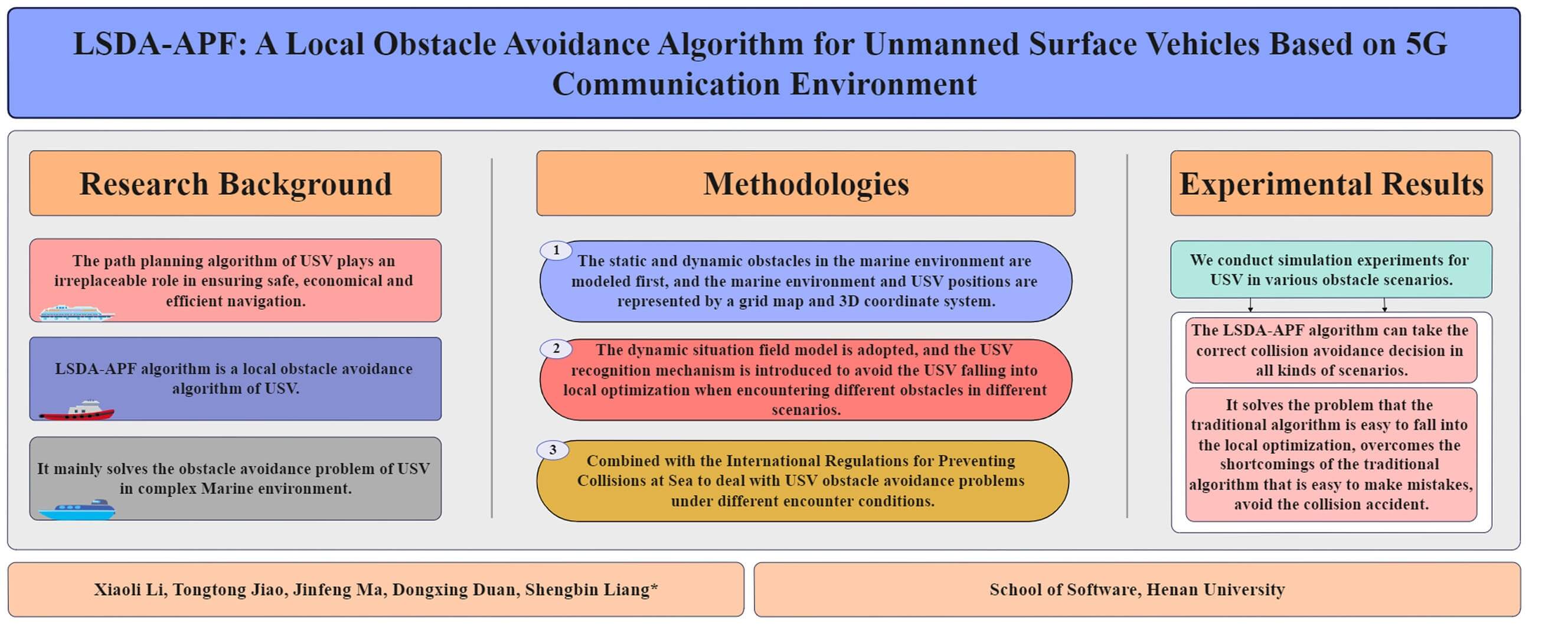 Open Access
Open Access
ARTICLE
LSDA-APF: A Local Obstacle Avoidance Algorithm for Unmanned Surface Vehicles Based on 5G Communication Environment
School of Software, Henan University, Kaifeng, 475004, China
* Corresponding Author: Shengbin Liang. Email:
(This article belongs to the Special Issue: AI-Driven Intelligent Sensor Networks: Key Enabling Theories, Architectures, Modeling, and Techniques)
Computer Modeling in Engineering & Sciences 2024, 138(1), 595-617. https://doi.org/10.32604/cmes.2023.029367
Received 15 February 2023; Accepted 14 April 2023; Issue published 22 September 2023
Abstract
In view of the complex marine environment of navigation, especially in the case of multiple static and dynamic obstacles, the traditional obstacle avoidance algorithms applied to unmanned surface vehicles (USV) are prone to fall into the trap of local optimization. Therefore, this paper proposes an improved artificial potential field (APF) algorithm, which uses 5G communication technology to communicate between the USV and the control center. The algorithm introduces the USV discrimination mechanism to avoid the USV falling into local optimization when the USV encounter different obstacles in different scenarios. Considering the various scenarios between the USV and other dynamic obstacles such as vessels in the process of performing tasks, the algorithm introduces the concept of dynamic artificial potential field. For the multiple obstacles encountered in the process of USV sailing, based on the International Regulations for Preventing Collisions at Sea (COLREGS), the USV determines whether the next step will fall into local optimization through the discrimination mechanism. The local potential field of the USV will dynamically adjust, and the reverse virtual gravitational potential field will be added to prevent it from falling into the local optimization and avoid collisions. The objective function and cost function are designed at the same time, so that the USV can smoothly switch between the global path and the local obstacle avoidance. The simulation results show that the improved APF algorithm proposed in this paper can successfully avoid various obstacles in the complex marine environment, and take navigation time and economic cost into account.Graphic Abstract

Keywords
Cite This Article
 Copyright © 2024 The Author(s). Published by Tech Science Press.
Copyright © 2024 The Author(s). Published by Tech Science Press.This work is licensed under a Creative Commons Attribution 4.0 International License , which permits unrestricted use, distribution, and reproduction in any medium, provided the original work is properly cited.


 Submit a Paper
Submit a Paper Propose a Special lssue
Propose a Special lssue View Full Text
View Full Text Download PDF
Download PDF Downloads
Downloads
 Citation Tools
Citation Tools